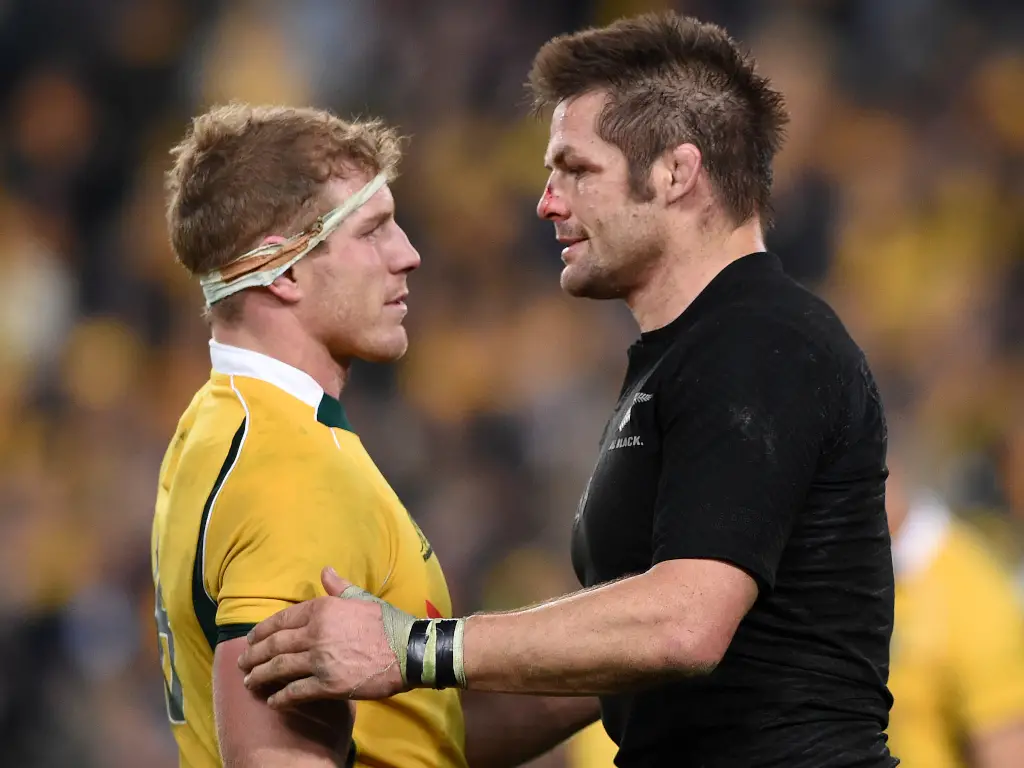Rugby players come in various shapes and sizes, depending on their position on the field. Generally, rugby players are known for their size, strength, and physicality. Here is a breakdown of the average weight and physique of rugby players by position:

- Prop: The prop is typically the heaviest player on the team and is responsible for providing stability in the scrum. The average weight of a prop is around 250-270 pounds (113-122 kg), with a height of 5’11”-6’3” (180-190 cm). A prop needs to have a strong upper body, broad shoulders, and a thick neck to withstand the pressure of the scrum.
- Hooker: The hooker is positioned between the two props and is responsible for hooking the ball back in the scrum. The average weight of a hooker is around 230-250 pounds (104-113 kg), with a height of 5’9”-6’1” (175-185 cm). A hooker needs to have a strong upper body and powerful legs to push in the scrum and move quickly around the field.
- Lock: The lock is positioned behind the front row and is responsible for providing stability in the lineout. The average weight of a lock is around 230-250 pounds (104-113 kg), with a height of 6’3”-6’7” (190-201 cm). A lock needs to have a tall and athletic build with good upper body strength, as well as the ability to jump high.
- Flanker: The flanker is positioned on either side of the scrum and is responsible for tackling and disrupting the opposition. The average weight of a flanker is around 220-240 pounds (100-109 kg), with a height of 5’10”-6’2” (178-188 cm). A flanker needs to have a muscular and agile build, with good speed and tackling ability.
- Number 8: The number 8 is positioned at the back of the scrum and is responsible for picking up the ball and running with it. The average weight of a number 8 is around 230-250 pounds (104-113 kg), with a height of 6’0”-6’5” (183-196 cm). A number 8 needs to have a powerful lower body and good ball-handling skills, as well as the ability to run with the ball and make tackles.
- Scrum-half: The scrum-half is responsible for distributing the ball from the scrum and controlling the game. The average weight of a scrum-half is around 170-190 pounds (77-86 kg), with a height of 5’7”-5’11” (170-180 cm). A scrum-half needs to have a low center of gravity, good agility, and quick reflexes to avoid tackles and make accurate passes.
- Fly-half: The fly-half is responsible for kicking and controlling the game’s pace and is often the team’s playmaker. The average weight of a fly-half is around 180-200 pounds (82-91 kg), with a height of 5’9”-6’1” (175-185 cm). A fly-half needs to have good decision-making skills, accurate kicking, and good ball-handling ability.
- Center: The center is responsible for running with the ball and making tackles. The average weight of a center is around 200-220 pounds (91-100 kg), with a height of 5’11”-6’3” (180-190 cm). A center needs to have good speed, agility, and ball-handling skills as well as the ability to read the game and make good decisions.
- Wing: The wing is positioned on the outside of the back line and is responsible for running with the ball and scoring tries. The average weight of a wing is around 180-200 pounds (82-91 kg), with a height of 5’11”-6’3” (180-190 cm). A wing needs to have good speed, agility, and ball-handling skills, as well as the ability to evade tackles and finish scoring opportunities.
- Fullback: The fullback is positioned at the back of the back line and is responsible for catching high kicks and counter-attacking. The average weight of a fullback is around 190-210 pounds (86-95 kg), with a height of 5’11”-6’3” (180-190 cm). A fullback needs to have good speed, agility, and ball-handling skills, as well as the ability to read the game and make quick decisions.
In general, the optimal physique for rugby players varies depending on their position. For forwards such as props, hookers, locks, and flankers, a larger and more muscular build is preferred to provide the necessary strength and power for scrummaging and lineouts. For backs such as scrum-halves, fly-halves, centers, wings, and fullbacks, a more athletic and agile build is preferred to provide the necessary speed and agility for running, evading tackles, and making accurate passes and kicks. Regardless of their position, all rugby players require excellent physical fitness, strength, and endurance to withstand the physical demands of the game.
FAQ
How big are rugby players on average?
Rugby players come in a variety of sizes, depending on their position on the field. The average weight of a rugby player is around 220-240 pounds (100-109 kg), but this can vary widely depending on the position.
What is the ideal weight for a rugby player?
The ideal weight for a rugby player depends on their position on the field. For example, props typically weigh around 250-270 pounds (113-122 kg), while scrum-halves weigh around 170-190 pounds (77-86 kg).
What is the tallest rugby player ever?
The tallest rugby player ever recorded was South African lock Andries Bekker, who stood at 6’10” (208 cm) tall.
What is the heaviest rugby player ever?
The heaviest rugby player ever recorded was Tongan prop Taniela Tupou, who weighed in at 350 pounds (158 kg) in 2021.
Do all rugby players need to be big and strong?
While size and strength are important attributes for many rugby players, not all players need to be big and strong. Backs such as scrum-halves, fly-halves, and fullbacks typically have a more athletic and agile build, while still requiring excellent physical fitness and endurance.
Are bigger rugby players more successful?
While size and strength can certainly be an advantage in rugby, it is not the only factor in a player’s success. Other attributes such as speed, agility, and skill are also important, and a player’s success ultimately depends on their overall ability to contribute to the team.
